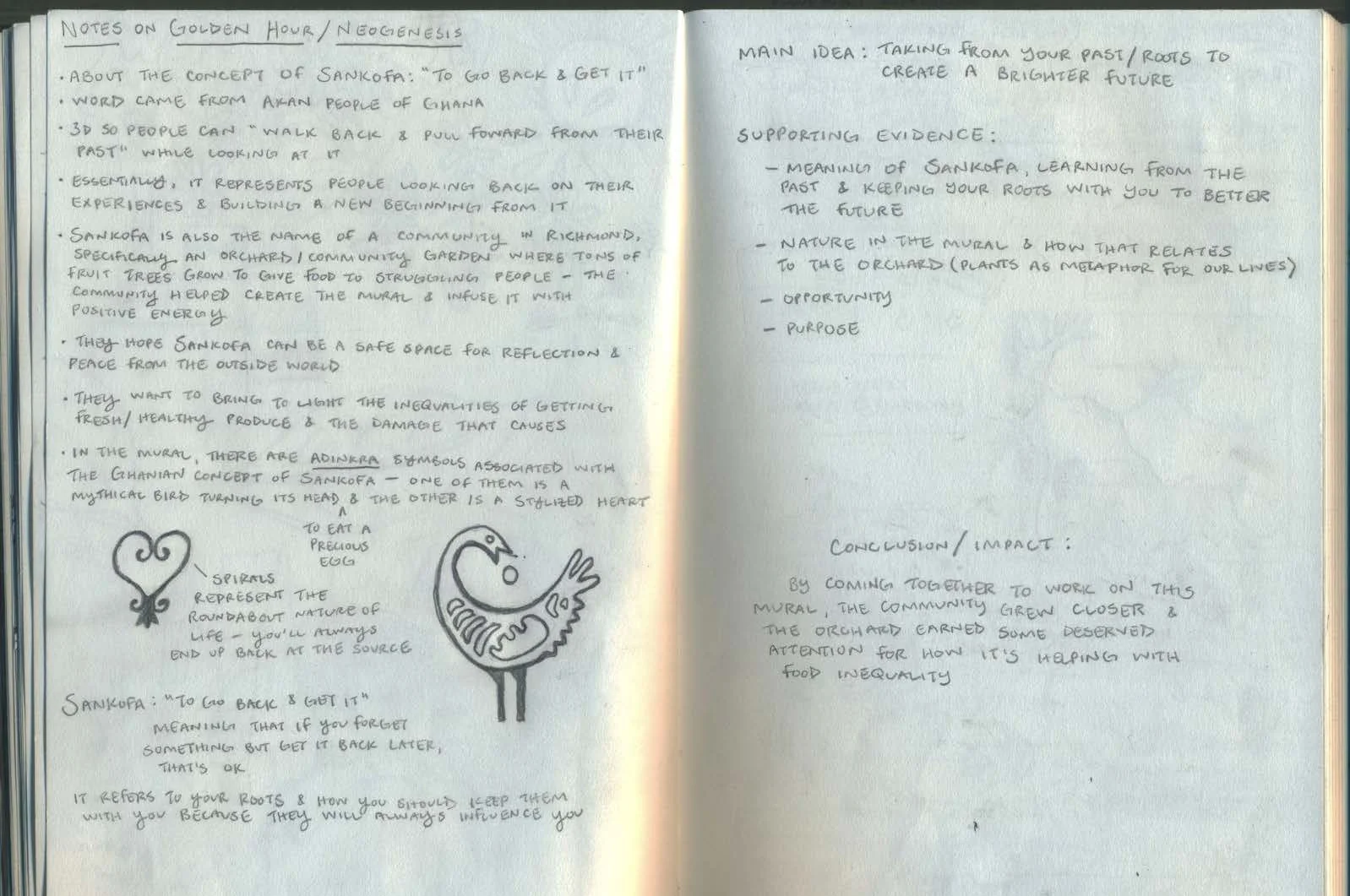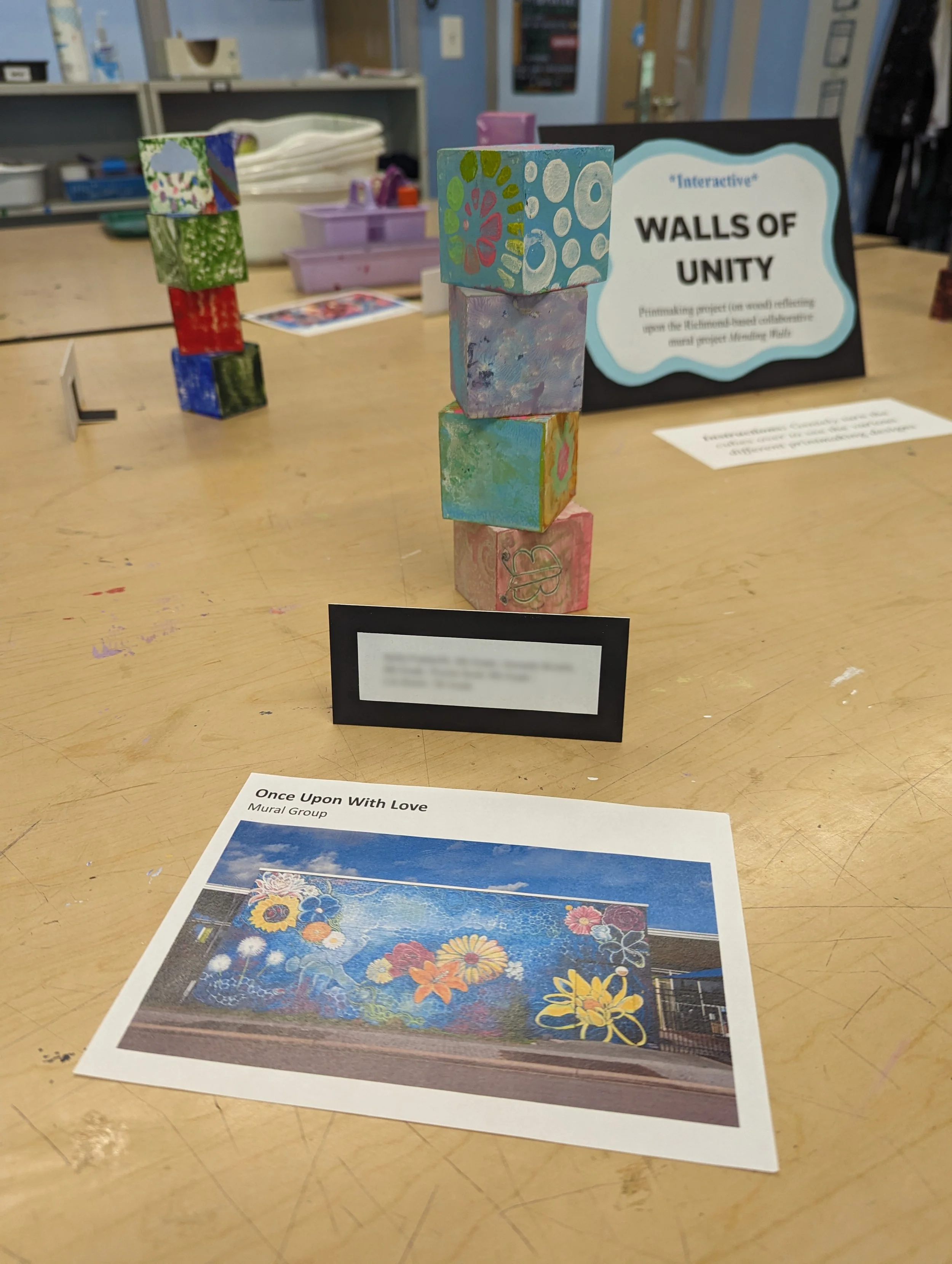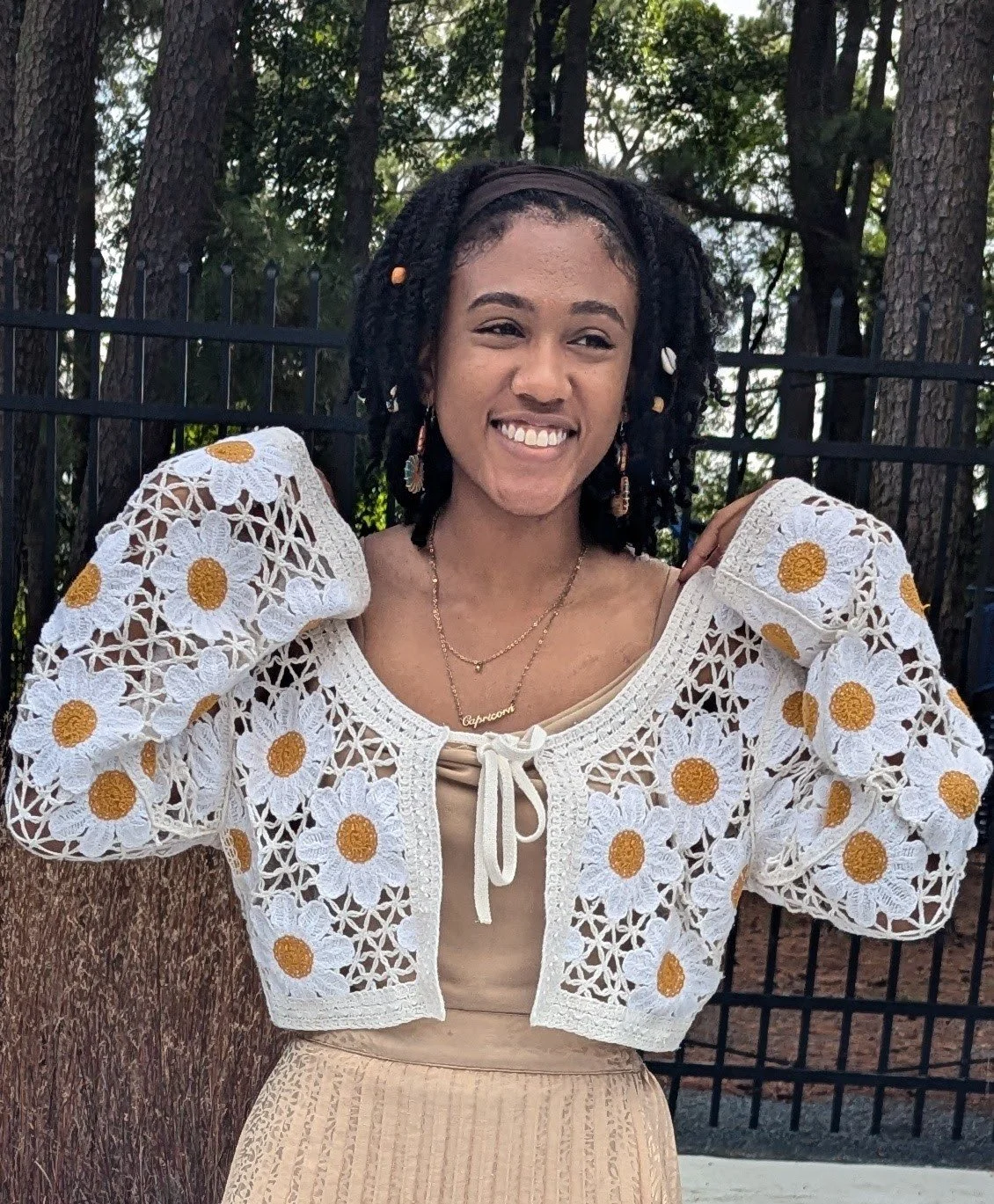Mending Classrooms through Community Art Practices: Using Mending Walls to Foster Collaboration, Empathy, and Critical Reflection
Artist/Researcher/Teacher
Amidst ongoing national and global conflict, community art can be a catalyst for building a more hopeful and connected future. For me, Mending Walls has become a vital classroom resource. It not only introduces students to community-engaged art but also invites them to think critically about social issues and the value of collaboration. Mending Walls offers multiple points of access for educators. Depending on student needs and course content, you can adapt the project to spark conversations, encourage empathy, and highlight art’s social impact. Three approaches I’ve found most effective are Film Reflection, Mural Engagement, and Podcast Research.
Film Reflection
Showing the award-winning Mending Walls documentary is an excellent introduction to the project’s impact. My students watch excerpts with film notes that guide them in identifying and discussing key messages. They then create visual journal reflections (credit to Dr. Caitlin Black), sketching or writing their interpretations of the collaboration, artmaking, and social impact at the heart of Mending Walls.
Best for: Middle to high school
Methods: Film notes for guided discussion; sketchbook reflections for independent analysis
(Visual Journaling Artwork Credit: Tucker High School Art II Student)
Mural Engagement
One of the most direct ways to use Mending Walls is through mural exploration. Having students draw connections to specific Mending Walls murals can be a hands-on way to address social topics and the value of collaboration.
In Richmond: Walking mural tours give students first-hand experiences with the artwork. Using Project Zero thinking routines, students observe and interpret mural elements while unpacking related social issues. This approach works well across age groups, with conversation depth tailored to grade level.
Outside Richmond: Even without direct access, students can engage meaningfully through “See. Think. Feel. Wonder.” handouts. I’ve used these with middle and high school students to spark group dialogue, encouraging them to thoughtfully analyze murals and create collaborative artwork in response.
Podcast Research
For deeper, research-based engagement, the Mending Walls podcasts are invaluable. I’ve used them as a foundation for collaborative assignments. Students select a mural, listen to its podcast, and take on research roles to investigate the artists and social themes discussed. Their findings then inform group visual essays.
Best for: High school
Methods: Independent listening with reflective notes; group discussions to synthesize findings and develop interpretations
(Midlothian High School Student Podcast Research Notes)
Example Project: “Walls of Unity”
One favorite outcome of Mural Engagement was the Walls of Unity project. After exploring a Mending Walls mural of their choice, my middle school students worked in groups to create prints using gelli plates and wooden blocks. Each block reflected elements they noticed in the mural, and when stacked together, the blocks formed a collective “wall” of their own. The process became a hands-on way to explore themes of unity, justice, and community-engaged art.
(Chesapeake Bay Academy Middle School “Walls of Unity” Group Project)
Moving forward
I’m excited to keep expanding these approaches—combining film, mural, and podcast engagement—to help students not just learn about art, but experience how it can shape communities. Mending Walls offers educators real-world tools for fostering empathy, reflection, and connection in the classroom. And in times like these, that feels more important than ever.
I hope you’ll explore Mending Walls in your own way—through a film clip, a podcast, or a mural—and see what conversations it sparks for you.
Author Jazmine Beatty, Get to know our friend better by following her at https://www.jazzybdesigns.com/about or on her IG https://www.instagram.com/jazzyb_designs/





